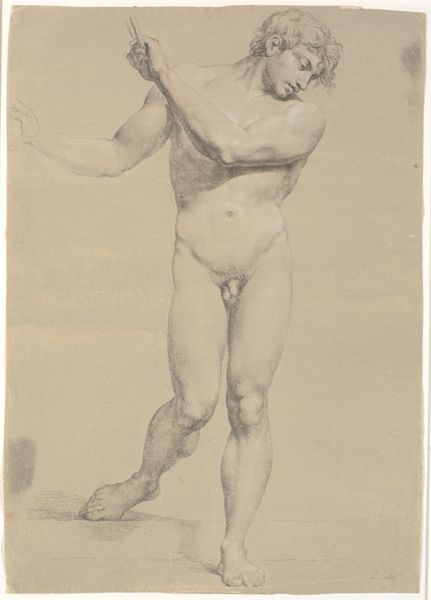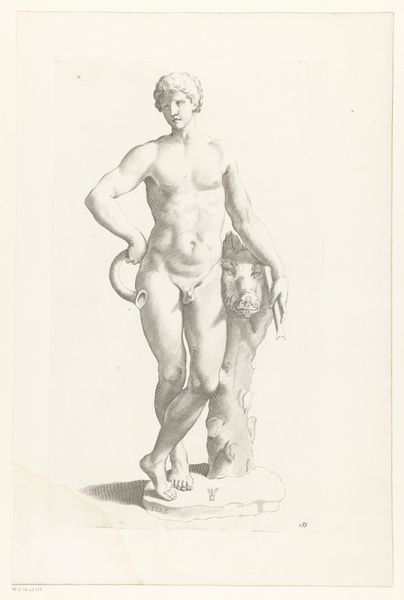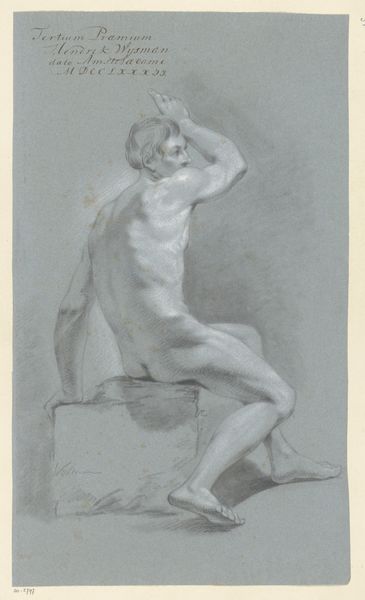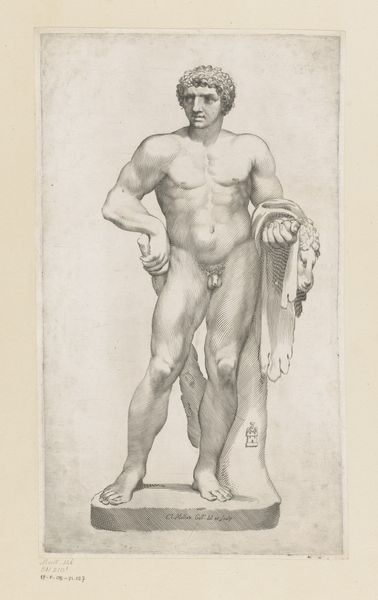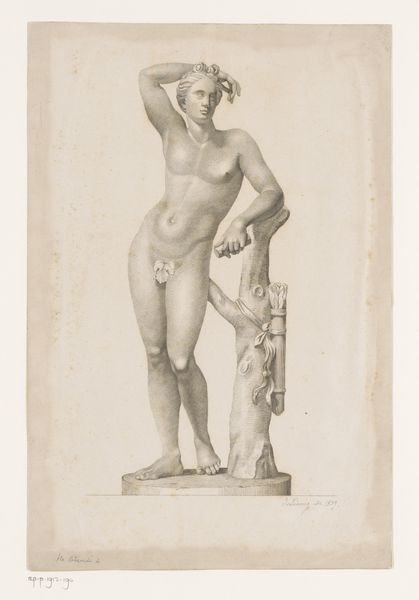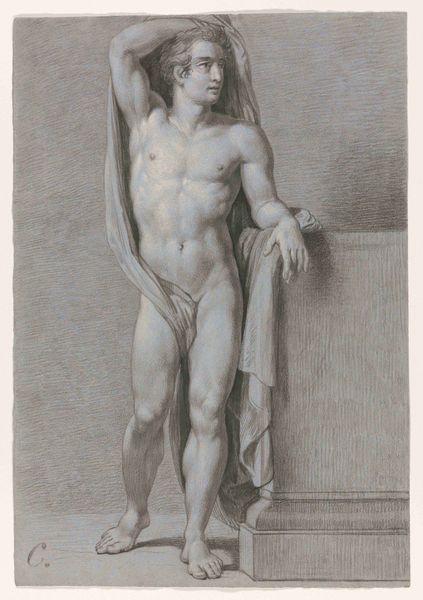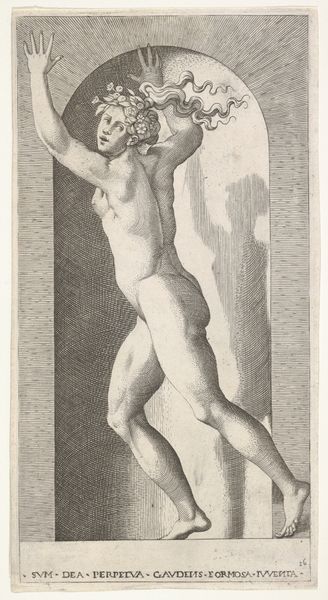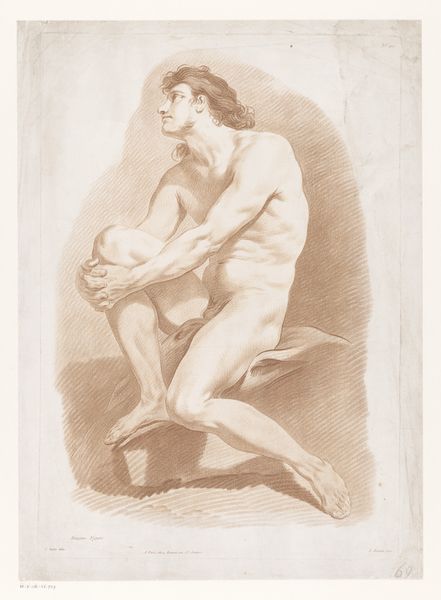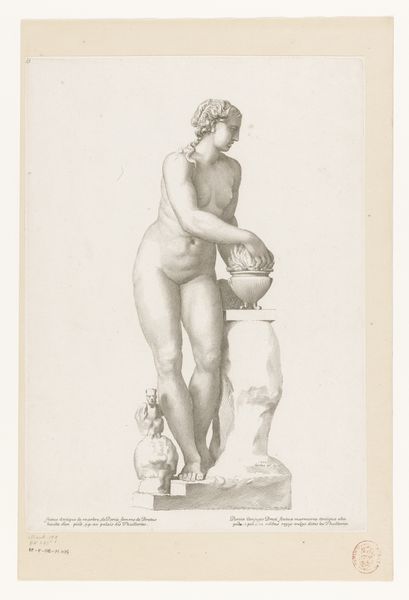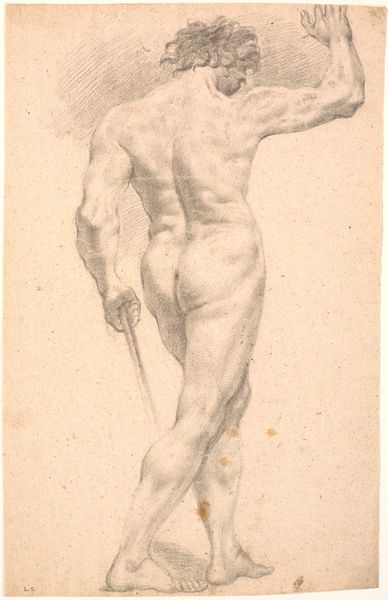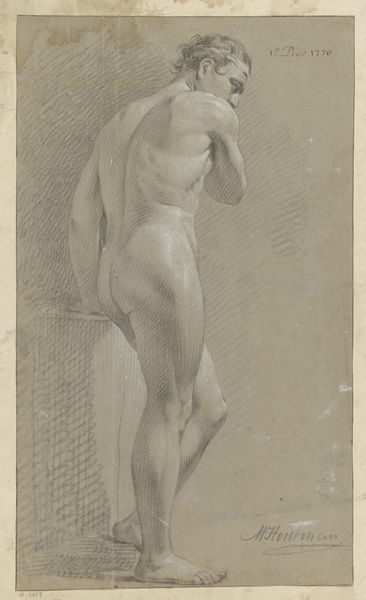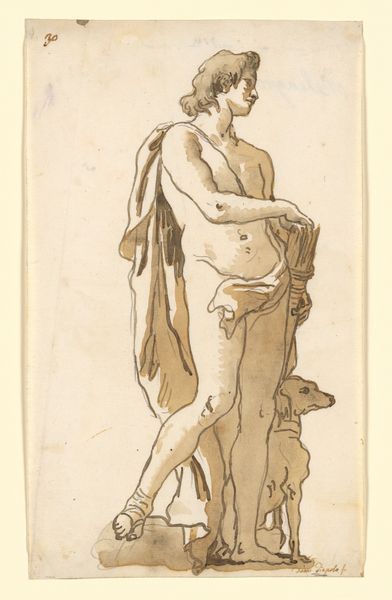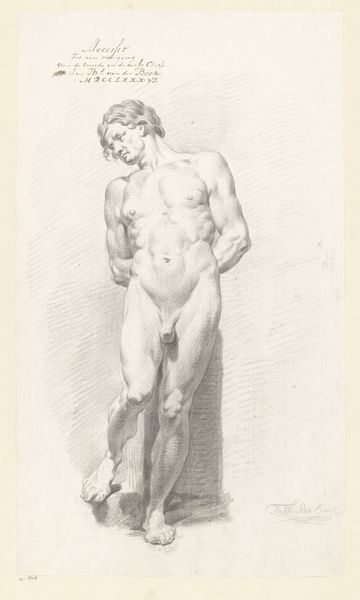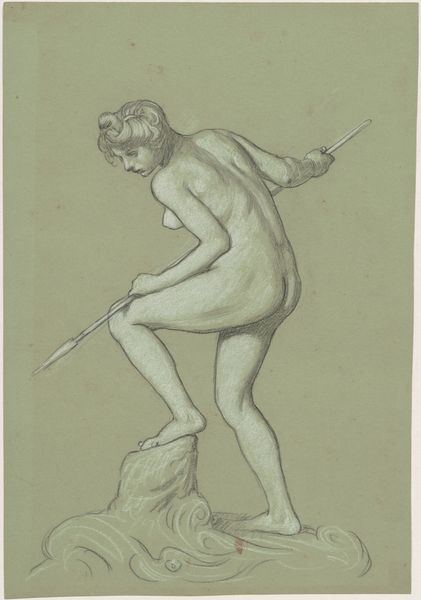
print, engraving
portrait
baroque
figuration
academic-art
nude
engraving
Dimensions: height 373 mm, width 238 mm
Copyright: Rijks Museum: Open Domain
Curator: I’m immediately struck by the gentleness in this image, almost melancholy. He looks as if he's paused for a rest in the woods, doesn’t he? Editor: He certainly does. What we have here is Claude Mellan’s engraving, "Statue of a Young Nude Faun," dating back to somewhere between 1631 and 1637. You can see it here at the Rijksmuseum. Curator: An engraving, of course! That explains the fineness of the line work, like delicate silverpoint. It is odd, though; usually, a faun leaps or cavorts—they are mischievous! This one, I keep feeling this sense of pensive calm from him, resting against a broken column of some kind. Editor: Right, well, let’s look at the cultural context. This falls squarely within the Baroque period, a time that was seeing an intense revival of interest in classical antiquity. Prints like this, which are after sculpture and architecture, circulated within academic and artistic circles, and they played a critical role. Curator: As documentation and sources of inspiration, certainly. Though I can’t help but feel it loses some of that boisterous spirit of antiquity by turning him into…well, he is basically an art-school anatomy model posing as a mythological creature. I wonder what it was like to actually see a nude form, to render one. So much emphasis on line... Did that not take something away? Editor: Well, I see it a little differently. It is, indeed, an artistic exercise in representing the ideal human form—look how carefully modeled the musculature is, even in monochrome. But more than just capturing the anatomy, Mellan seems concerned with projecting an aura of civilized virtue. This faun isn’t wild. Curator: I see what you mean. The softness of the eyes and the slight downward cast of the face do communicate… a tamed sensuality, perhaps? Even his drapery is restrained. He's as domesticated as a house cat. Editor: It is indicative, really, of the baroque era. Even the pagan elements must bow to the conventions of courtly refinement and artistic standards. Curator: Fair enough! So much for Dionysian revelry then. Now I see why he’s so calm, I guess I should leave him to his rest! Editor: And a thoughtful rest it seems to be. Thank you for your insights. It all speaks to the way the classical tradition shaped artists in the 17th century.
Comments
No comments
Be the first to comment and join the conversation on the ultimate creative platform.
